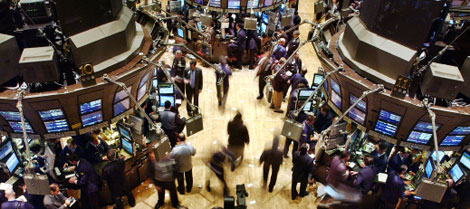The so-called fear index, the CBOE S&P 500 Volatility Index (VIX), just isn’t very fearful right now.
In spite of all the negative talk from Federal Reserve officials, Wall Street figures like JPMorgan Chase’s Jamie Dimon, and various and sundry economies, stocks just aren’t showing much fear right now.
Oh, sure stocks fell this week but the VIX didn’t show any big rush to hedge downside risk. The index, which measures demand for options on the S&P 500 index to hedge risk, was up Friday to 21.67, sure. But a move higher of 2.67% isn’t exactly a rush for the exits. The normal range for the VIX over the long term is somewhere near 17 or 18, so at 21.67, the index is barely above “average.” If this market were truly fearful, we’d be looking at a VIX near 30 or perhaps higher. (There have been a couple of trades in the last 10 days that bought Call options on the VIX at 40 or even 50, but these trades haven’t been repeated and they look like an effort to buy Call options when they were really cheap in the hope that a VIX jump to 30 or so would turn these cheap options into higher priced options. I don’t think these traders are thinking that the VIX will actually hit 40 or 50.)
What conclusions do I draw from this low level on the VIX?
First, the low level of the VIX understates the recent move higher for the fear index. The VIX has been remarkably low for a number of months–even before the 2023 rally. The Friday close at 21.67 actually represents a significant move up from 17.87 on February 2. That’s roughly a 21.3% increase in the VIX in a little more than 3 weeks.
Second, the VIX measures relatively short-term “fear” by looking at trading activity in options over the next month or so. So what this index is saying right now is that in that time frame traders and investors aren’t especially fearful. That time frame doesn’t include a battle over increasing the debt ceiling or an unexpected interest rate increase from the Federal Reserve at its June meeting.
Third, the VIX has become increasingly less useful as a measure of “fear sentiment” because traders and investors have found alternative ways to hedge the market besides options on the S&P 500 index.
My conclusion from all this is that, pending unexpected events in the financial market and in the “real” world, the current slide in the major stock indexes is likely to continue but that it doesn’t–over the time period covered by the VIX–show signs of going from a slide to one of those big events that flush lots of investors and their money out of the markets.
I think we might get one of those in May or June, and I’m certainly not looking for the 2023 rally to continue strongly, but another full-throated roar from the Bear market is still some months off in my opinion.


